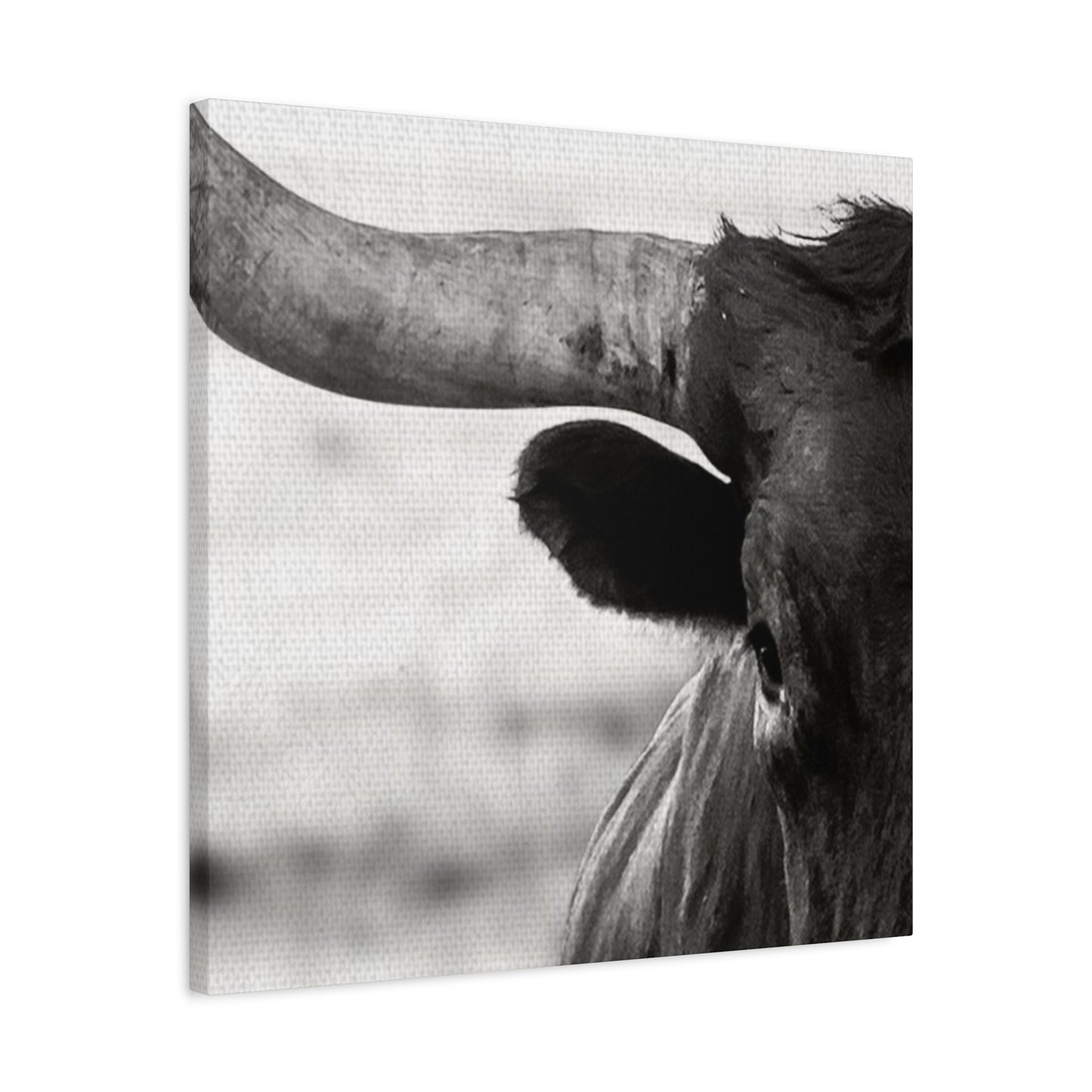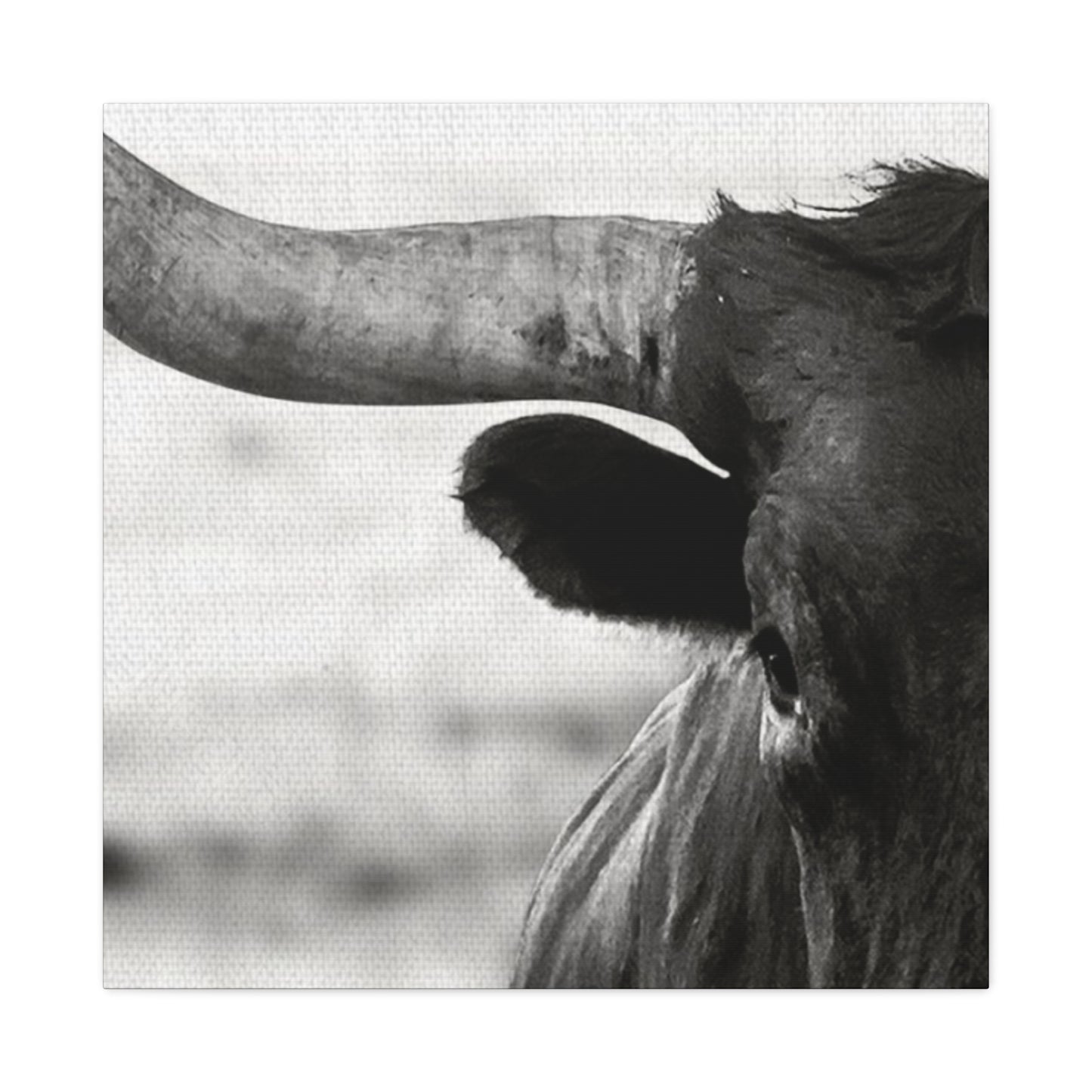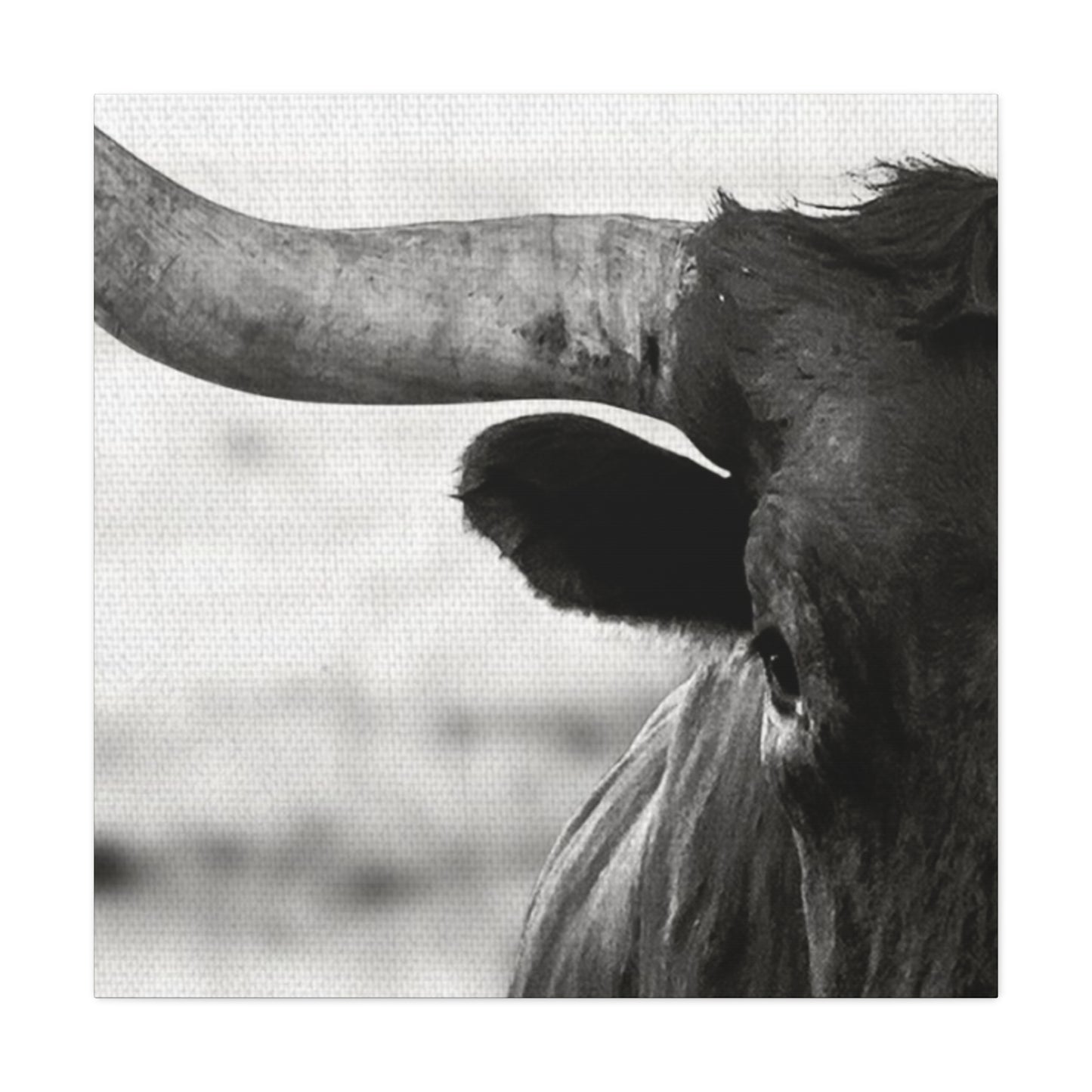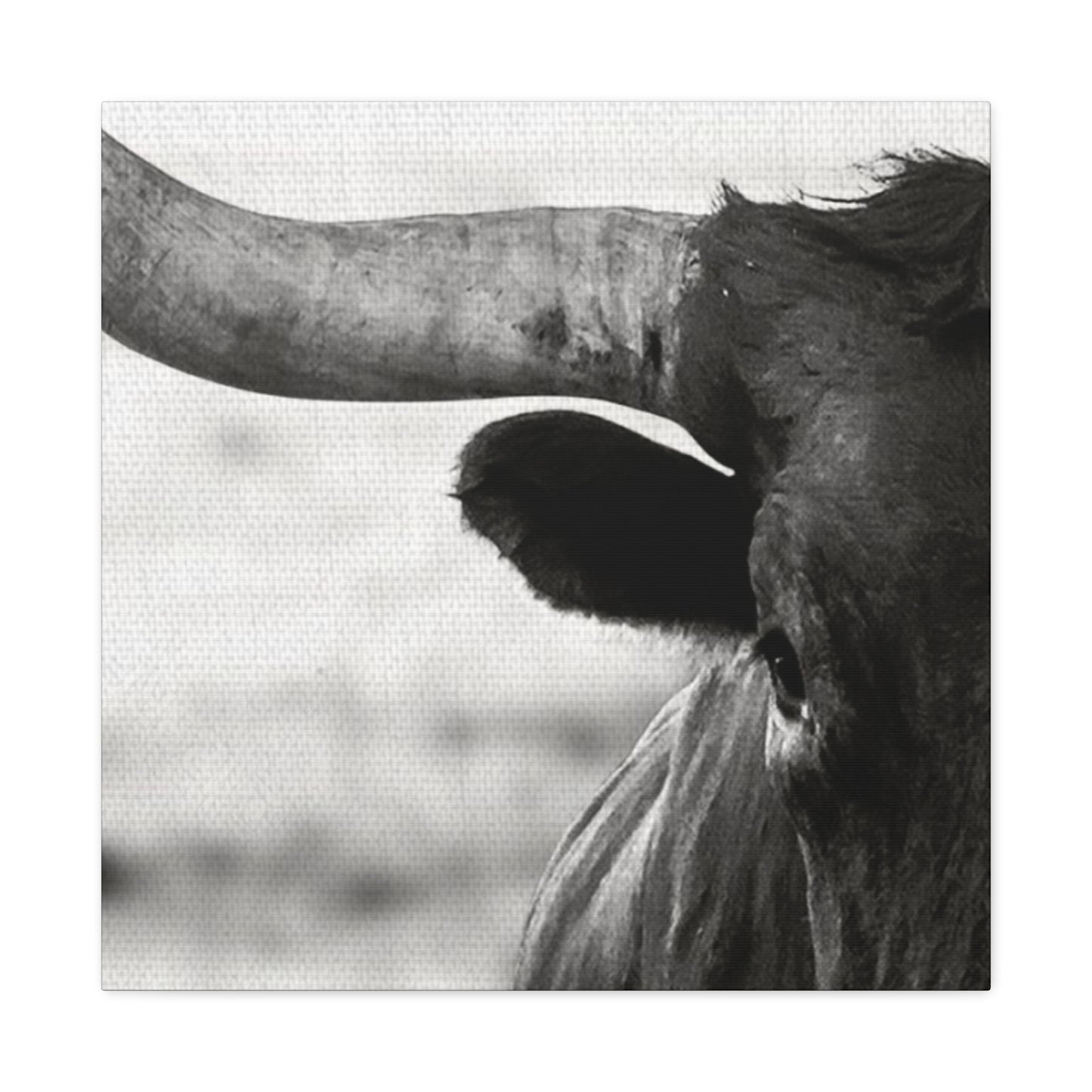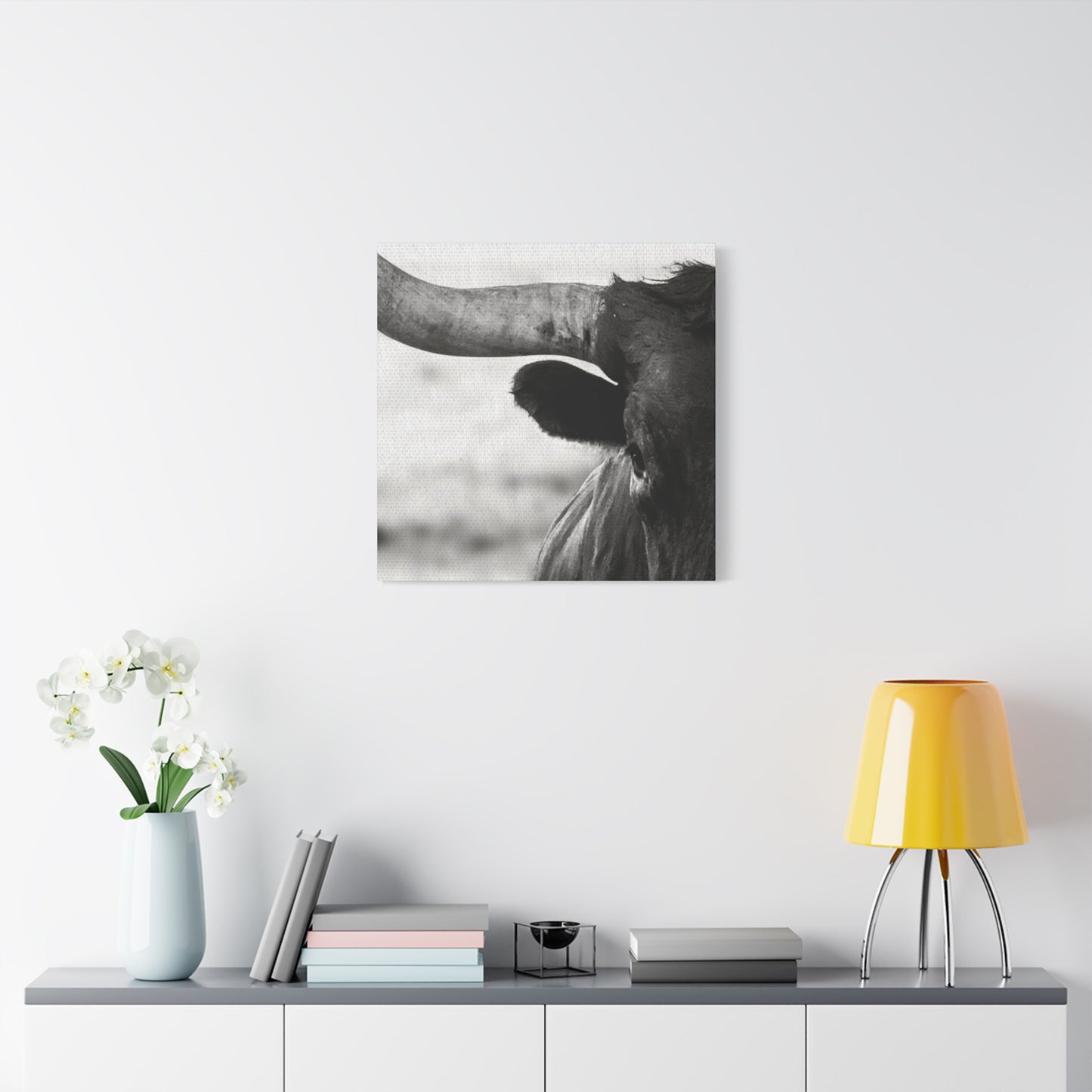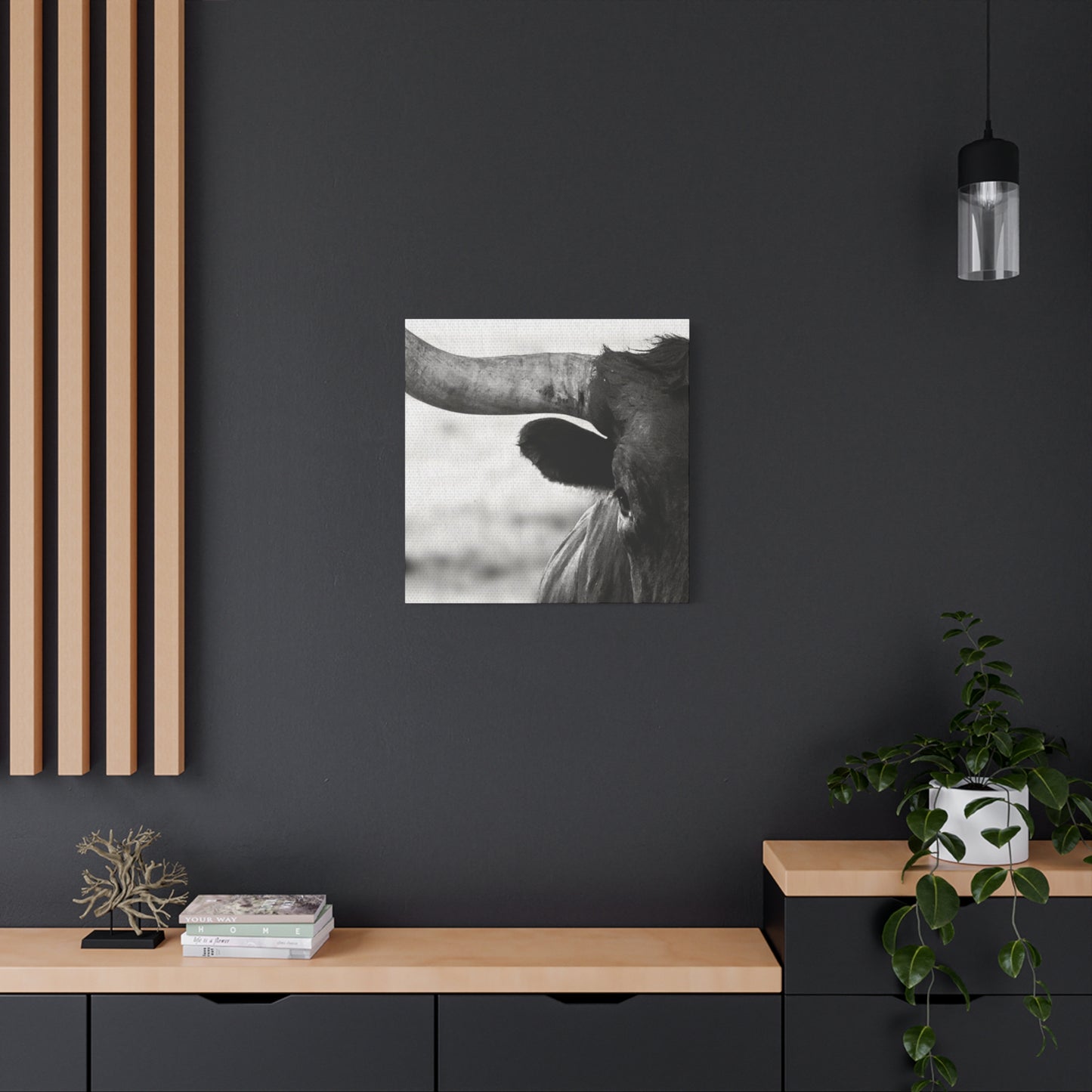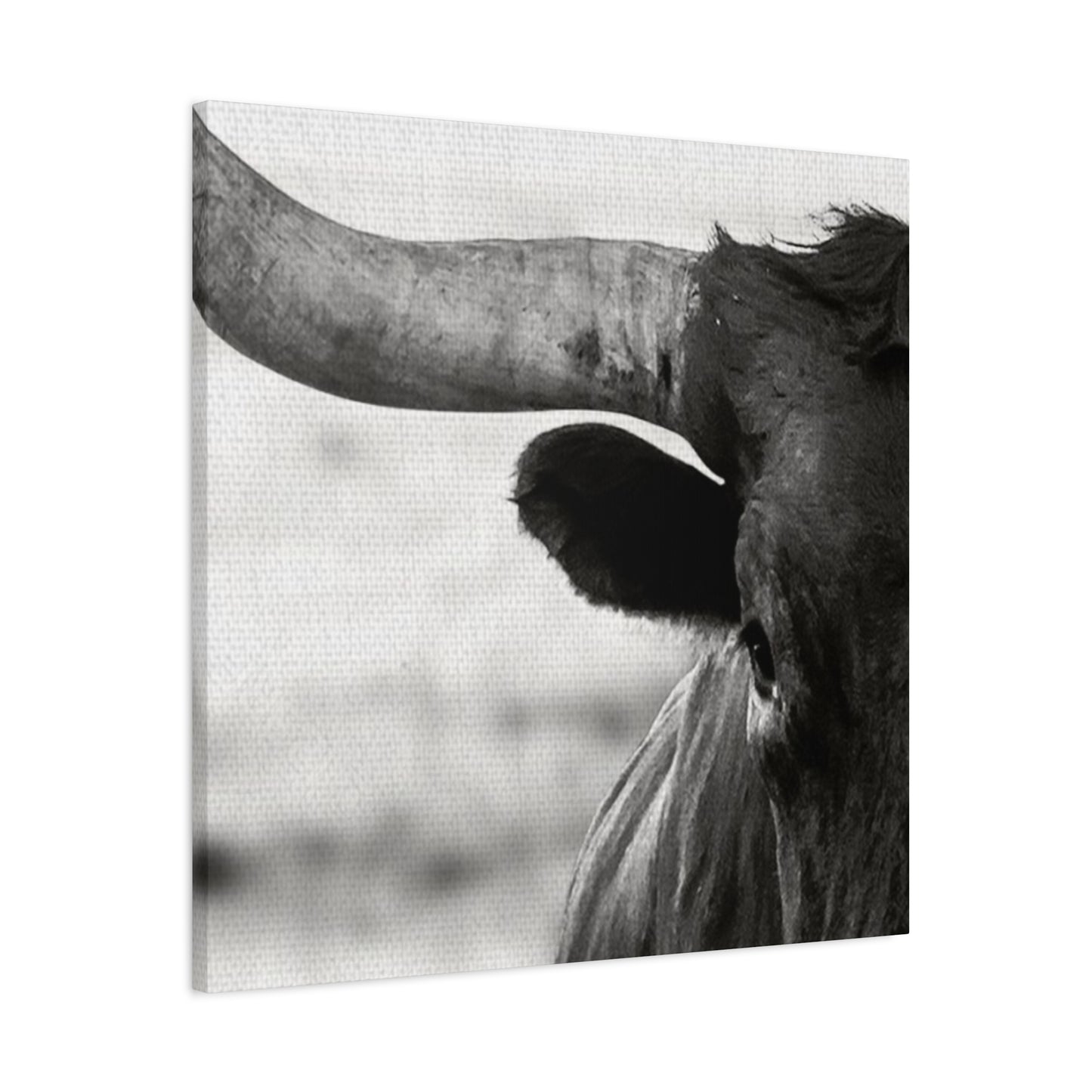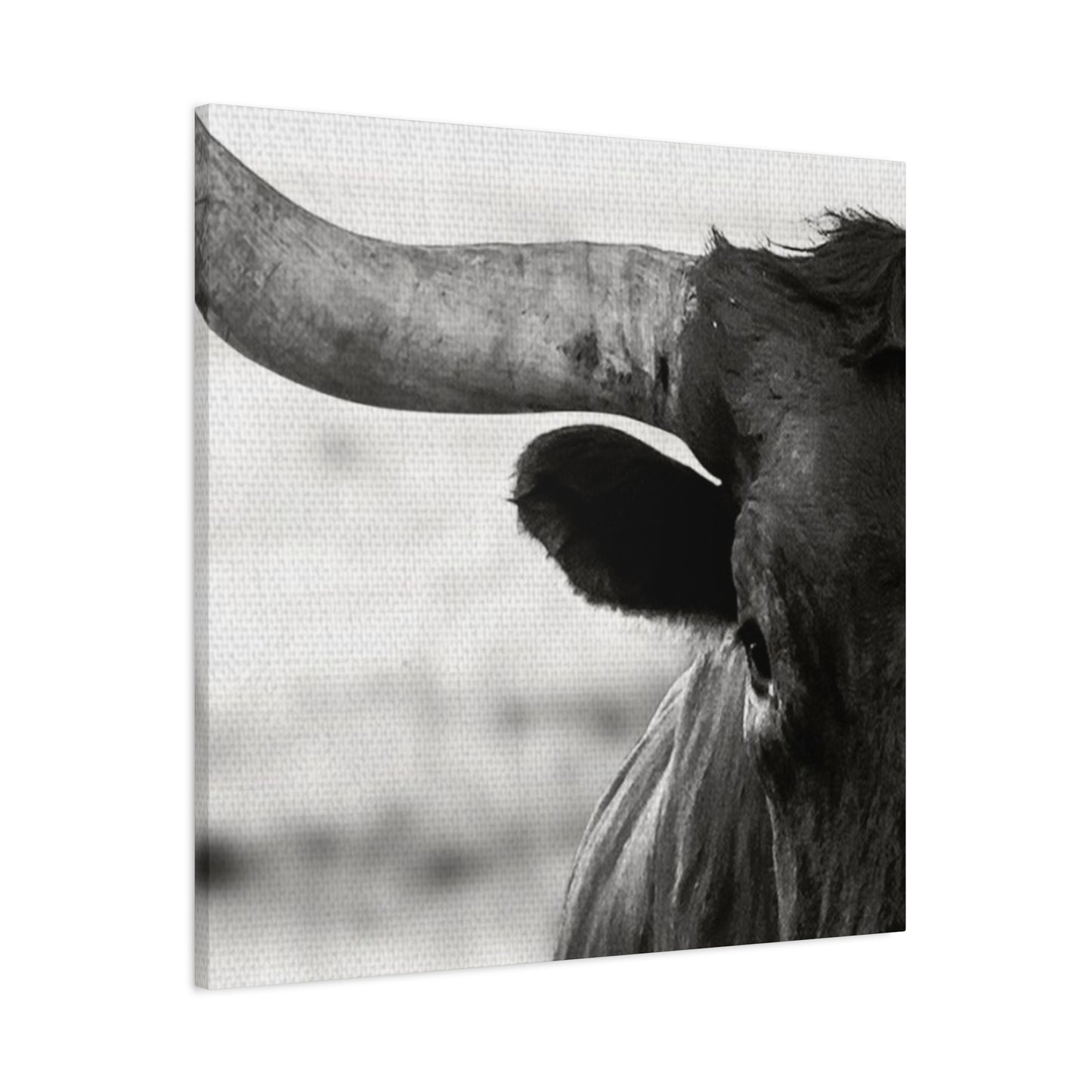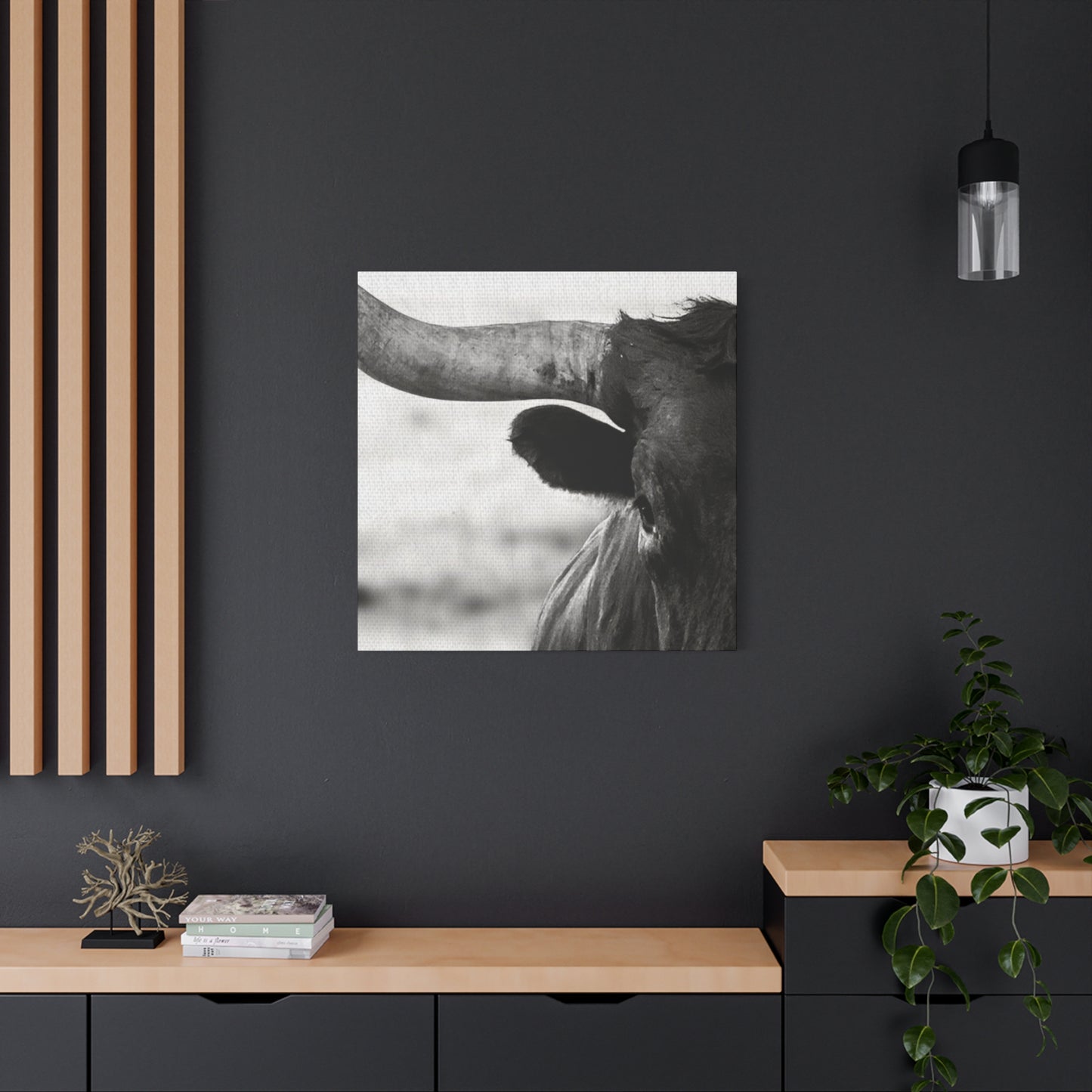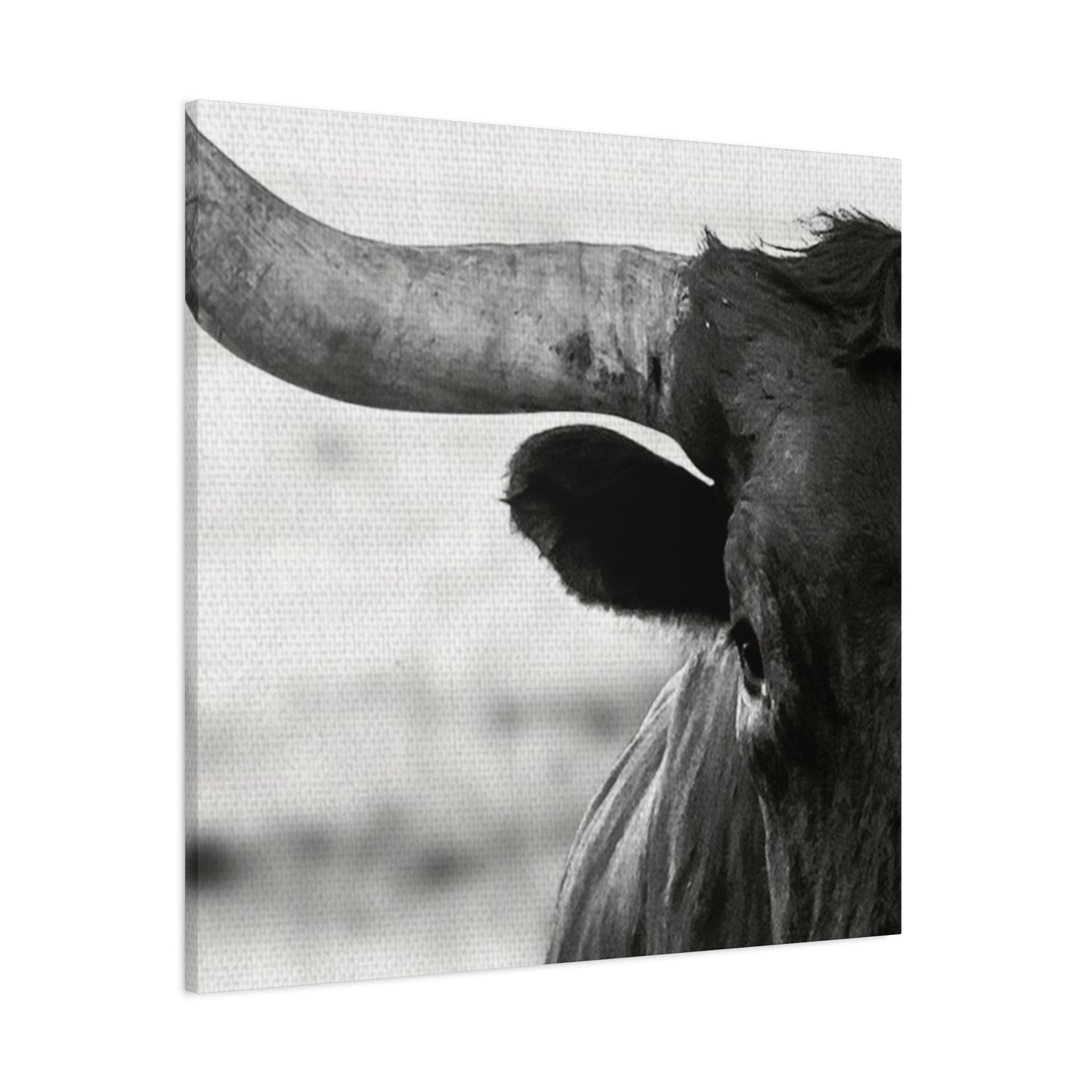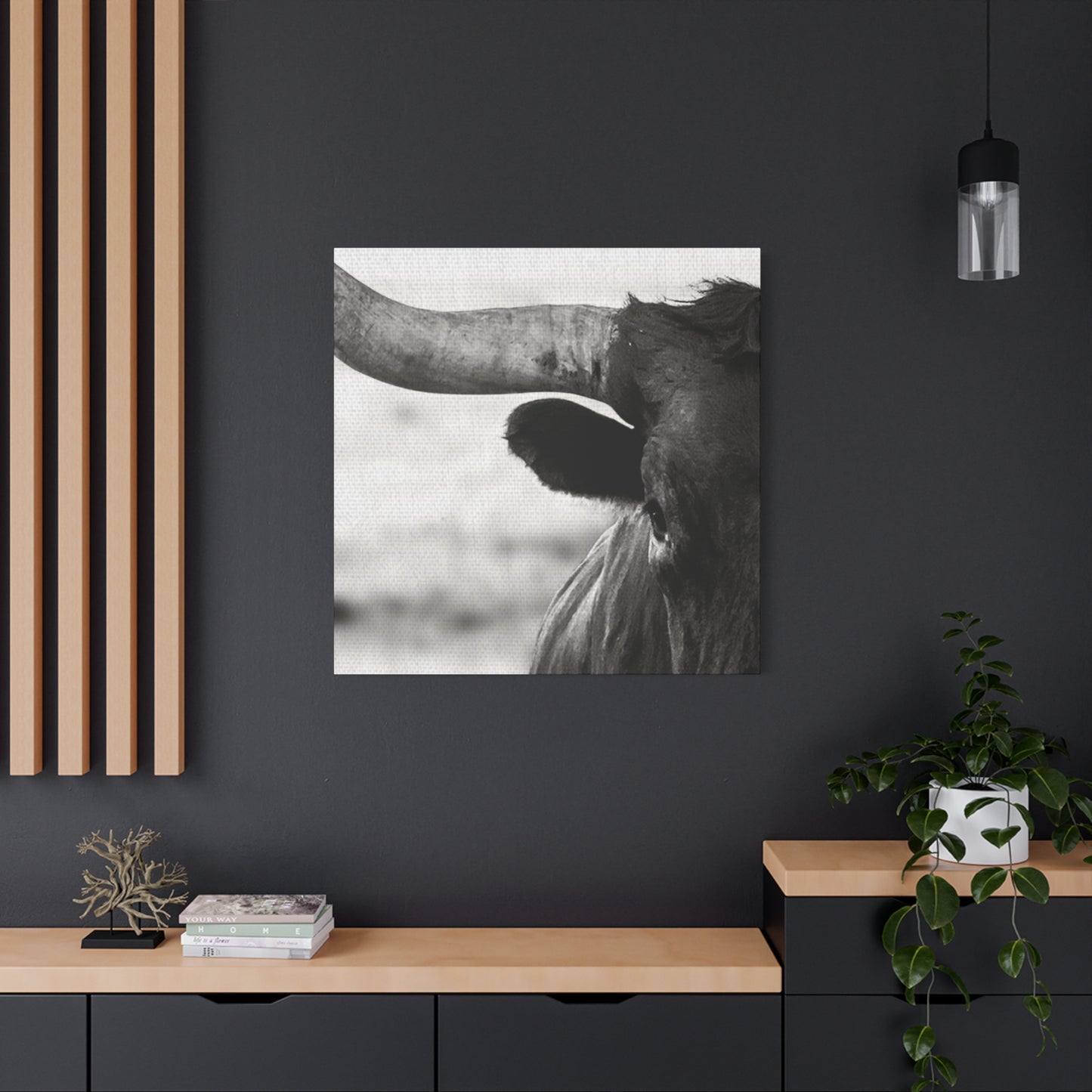Longhorn Wall Art: Celebrating Authentic Texas Heritage Through Distinctive Home Decor
The mighty longhorn cattle has become an enduring symbol of American frontier heritage, representing strength, resilience, and the untamed spirit of the Old West. These magnificent creatures, with their distinctive wide-spanning horns and robust build, have transcended their agricultural origins to become powerful artistic motifs that capture the essence of Texas culture and southwestern tradition. When incorporated into home decor, longhorn imagery brings a sense of authenticity and connection to America's rich ranching history while adding visual impact and character to any living environment.
The appeal of longhorn-themed artwork extends far beyond mere decoration, serving as a bridge between past and present, connecting modern homeowners with the pioneering spirit that shaped the American Southwest. Whether rendered in traditional realistic styles or interpreted through contemporary artistic lenses, these powerful bovine subjects offer endless possibilities for creating compelling visual narratives that celebrate both natural beauty and cultural heritage.
How Longhorn Artwork Embodies Texas Cultural Heritage
The connection between longhorn cattle and Texas identity runs deeper than most people realize, stretching back to the earliest days of European settlement in the region. These hardy animals arrived with Spanish colonizers in the 16th century and gradually adapted to the harsh Texas climate, developing the distinctive characteristics that make them instantly recognizable today. Their ability to thrive in challenging conditions made them invaluable to early settlers and ranchers, establishing their place as symbols of survival and determination.
Throughout the 19th century, longhorn cattle played a crucial role in shaping Texas economy and culture. The famous cattle drives that moved millions of head from Texas ranches to northern markets became legendary, creating stories and folklore that continue to influence how Americans view the Old West. These epic journeys required tremendous courage, skill, and endurance from both cowboys and cattle, establishing the longhorn as a symbol of the adventurous spirit that defined frontier life.
Modern representations of longhorn cattle in artwork serve as visual reminders of this rich historical legacy. Artists who choose longhorns as their subject matter often draw inspiration from the animal's symbolic associations with freedom, strength, and independence. These themes resonate strongly with contemporary audiences who value authenticity and connection to American heritage, making longhorn art particularly appealing to those seeking to create meaningful home environments.
The distinctive physical characteristics of longhorn cattle provide artists with compelling visual elements that translate beautifully into various artistic mediums. The sweeping curves of their horns create dramatic silhouettes that work equally well in minimalist contemporary settings and traditional rustic environments. The textural qualities of their coats offer opportunities for exploring different painting techniques and color palettes, while their expressive faces convey personality and emotion that viewers find engaging.
Regional variations in longhorn artwork often reflect local cultural influences and artistic traditions. Texas artists might emphasize the connection to ranch life and cattle drives, while artists from other southwestern states might incorporate Native American symbolism or desert landscapes. These regional interpretations help create diverse artistic expressions that appeal to different aesthetic preferences while maintaining connection to the broader cultural significance of longhorn imagery.
The preservation of longhorn heritage through art serves an important cultural function, helping to maintain connections to historical traditions in an increasingly urbanized world. Many contemporary families have no direct experience with ranch life or cattle raising, yet they feel drawn to longhorn imagery because it represents values and experiences that remain relevant today. The independence, resilience, and strength associated with these animals continue to inspire people facing their own challenges and seeking to create homes that reflect their values and aspirations.
Harmonizing Rustic and Contemporary Aesthetics with Longhorn Imagery
The challenge of successfully combining rustic and modern design elements has become increasingly relevant as homeowners seek to create environments that feel both current and timeless. Longhorn artwork offers unique solutions to this design challenge, serving as a bridge between traditional western themes and contemporary aesthetic sensibilities. The key lies in understanding how to balance the inherent rusticity of longhorn imagery with clean modern lines and sophisticated color schemes.
Contemporary interpretations of longhorn art often employ simplified forms and refined color palettes that maintain the essential character of the subject while eliminating overly literal or clichéd western references. Artists working in this style might focus on the elegant curves of longhorn silhouettes, rendering them in subtle earth tones or even monochromatic schemes that complement modern furnishings and architectural details. This approach allows the natural beauty and symbolic power of the longhorn to shine through without overwhelming contemporary living environments.
The material choices for longhorn artwork play a crucial role in determining how successfully the piece will integrate with different design styles. Traditional materials like reclaimed wood and wrought iron naturally complement rustic decor elements, while sleek metal finishes and high-quality canvas prints work better in contemporary settings. Mixed media approaches can effectively bridge both worlds, incorporating traditional materials in unexpected ways or combining rustic textures with modern presentation formats.
Scale considerations become particularly important when working to blend rustic and modern elements through longhorn art. Large-scale pieces can serve as dramatic focal points that anchor entire rooms, while smaller works might function as subtle accents that add character without dominating the design scheme. The placement and surrounding context of longhorn artwork significantly influence how it interacts with other design elements, affecting the overall balance between rustic charm and contemporary sophistication.
Color coordination strategies can help ensure that longhorn art enhances rather than conflicts with existing decor elements. Modern homes often feature neutral color schemes that provide excellent backdrops for longhorn artwork in natural earth tones or classic black and white presentations. The warm browns, deep grays, and rich blacks commonly found in longhorn imagery complement contemporary furniture and accessories while adding visual warmth and texture to potentially sterile modern environments.
Lighting design plays a supporting role in successfully integrating longhorn art into mixed-style environments. Contemporary track lighting or sleek picture lights can highlight traditional longhorn paintings or sculptures while maintaining the clean aesthetic lines preferred in modern homes. Conversely, rustic lighting fixtures like wrought iron chandeliers or wooden beam accent lighting can help create cohesive environments where contemporary longhorn art feels naturally at home alongside traditional furniture and accessories.
The framing and presentation of longhorn artwork provides another opportunity to bridge rustic and modern design approaches. Traditional pieces might benefit from simple, clean frames that prevent the artwork from appearing dated or overly themed, while contemporary longhorn art might be enhanced by rustic framing materials that add texture and visual interest. The goal is to create harmonious relationships between all design elements that support the overall aesthetic vision while allowing each piece to contribute its unique character to the environment.
The Development of Longhorn Symbolism in Current Decorative Arts
The artistic interpretation of longhorn cattle has undergone significant evolution as contemporary artists have discovered new ways to express the enduring appeal of these iconic animals. Modern longhorn imagery has moved far beyond literal representations to encompass abstract interpretations, stylized renderings, and conceptual approaches that explore the deeper meanings and associations connected to these powerful creatures.
Contemporary artists working with longhorn themes often focus on the essential visual elements that make these animals instantly recognizable while eliminating unnecessary details that might date or limit their work. The distinctive horn shapes provide particularly rich material for artistic exploration, offering opportunities to create dynamic compositions based on sweeping curves and dramatic angles. These simplified approaches allow artists to create works that feel both timeless and current, appealing to viewers who appreciate both traditional western heritage and modern aesthetic sensibilities.
The symbolic associations of longhorn cattle have expanded and evolved as artists have explored their potential meanings in contemporary contexts. While traditional associations with strength, freedom, and frontier spirit remain relevant, modern interpretations often emphasize themes like resilience, adaptability, and connection to nature that resonate with contemporary concerns about environmental sustainability and authentic living. These expanded symbolic meanings help explain the continued popularity of longhorn imagery among diverse audiences with varying cultural backgrounds and aesthetic preferences.
Digital art and new media technologies have opened exciting new possibilities for longhorn artistic expression. Computer graphics and digital painting techniques allow artists to experiment with color combinations, textures, and compositional approaches that would be difficult or impossible to achieve with traditional media. Photography combined with digital manipulation creates opportunities for surreal or fantastical interpretations that push the boundaries of traditional longhorn art while maintaining connection to the essential character of these remarkable animals.
Mixed media approaches have become increasingly popular among contemporary artists working with longhorn themes. Combining traditional painting or drawing techniques with collage elements, found objects, or sculptural components creates rich, layered works that offer multiple levels of visual interest and meaning. These approaches often reflect the complex relationship between traditional western heritage and contemporary American culture, creating artistic dialogues that engage viewers in deeper consideration of cultural identity and historical continuity.
The globalization of contemporary art markets has led to interesting cross-cultural interpretations of longhorn imagery. Artists from different cultural backgrounds bring their own perspectives and artistic traditions to longhorn subjects, creating works that blend western American iconography with international artistic influences. These cross-cultural approaches help expand the appeal of longhorn art while demonstrating the universal resonance of themes like strength, freedom, and connection to nature that these animals represent.
Installation art and environmental art projects featuring longhorn themes have gained recognition in both gallery and public art contexts. These large-scale works often explore the historical relationship between humans and cattle while commenting on contemporary issues like urban development, environmental conservation, and cultural preservation. Such projects help establish longhorn imagery as a legitimate subject for serious contemporary art while maintaining its accessibility and popular appeal.
Creating Authentic Southwestern Atmosphere Through Longhorn Artwork
The southwestern United States possesses a distinctive cultural identity shaped by the convergence of Native American, Spanish colonial, and Anglo-American traditions. Longhorn cattle played significant roles in the development of this regional culture, serving as both economic drivers and symbolic representations of the southwestern way of life. Contemporary homeowners seeking to create authentic southwestern atmospheres in their living environments often turn to longhorn artwork as a way to connect with this rich cultural heritage while expressing their appreciation for the natural beauty and independent spirit associated with the region.
Successful southwestern design schemes require careful attention to color palettes that reflect the natural landscapes and cultural traditions of the region. The warm earth tones commonly found in southwestern environments provide excellent foundations for longhorn artwork that emphasizes natural colors and textures. Terra cotta reds, warm browns, sage greens, and dusty blues create harmonious backdrops that allow longhorn imagery to feel naturally integrated rather than artificially imposed. These color relationships help establish the authentic connections to place that make southwestern design so appealing to contemporary homeowners.
Texture plays an equally important role in creating convincing southwestern atmospheres, and longhorn artwork offers numerous opportunities to introduce authentic textural elements. Hand-carved wooden longhorn sculptures bring the rough, weathered textures associated with ranch life and frontier construction. Metal longhorn art fabricated from iron or steel introduces the industrial textures connected to ranching equipment and architectural hardware. Canvas paintings with heavy impasto techniques or collage elements can provide tactile surfaces that complement other southwestern textural elements like woven textiles, leather furnishings, and natural stone surfaces.
The architectural context significantly influences how successfully longhorn art contributes to southwestern atmosphere creation. Adobe walls, exposed wooden beams, and natural stone surfaces provide ideal backdrops for longhorn artwork that emphasizes traditional materials and techniques. However, contemporary homes with clean lines and modern materials can also successfully incorporate southwestern themes through careful selection of longhorn art that bridges traditional and contemporary aesthetics. The key lies in understanding how different architectural contexts affect the perception and impact of decorative elements.
Regional plant life and landscape elements provide important contextual references for longhorn artwork intended to create southwestern atmospheres. Cacti, desert wildflowers, mesa formations, and sunset skies often appear as background elements in longhorn paintings, helping to establish specific geographic and cultural associations. Artists working in this tradition understand the importance of accurately representing these environmental details, as authenticity is crucial for creating convincing regional atmosphere. Homeowners can enhance these effects by incorporating live plants, landscape photography, and natural materials that reinforce the southwestern theme.
Cultural artifacts and traditional crafts from southwestern communities provide additional context for longhorn artwork in regional design schemes. Native American pottery, Mexican textiles, Spanish colonial furniture, and cowboy memorabilia can work together with longhorn art to create rich, layered environments that celebrate the multicultural heritage of the Southwest. The challenge lies in achieving balanced compositions that honor different cultural traditions without creating confusion or cultural appropriation concerns.
Lighting considerations become particularly important when using longhorn art to create southwestern atmospheres. The intense sunlight and dramatic shadows characteristic of southwestern landscapes can be referenced through strategic lighting choices that emphasize the sculptural qualities of longhorn forms. Warm-toned lighting that mimics golden hour conditions helps establish the romantic associations many people have with southwestern environments while highlighting the natural beauty and character of longhorn subjects.
Minimalist Longhorn Silhouettes for Contemporary Environments
The growing popularity of minimalist design principles has created new opportunities for longhorn imagery to find expression in contemporary home environments. By reducing longhorn forms to their most essential elements, artists can create powerful visual statements that maintain the symbolic impact of these iconic animals while satisfying the clean, uncluttered aesthetic preferences of modern homeowners. Minimalist longhorn silhouettes offer particularly effective solutions for those seeking to incorporate western heritage themes without overwhelming contemporary design schemes.
The distinctive horn shapes of longhorn cattle provide ideal subjects for minimalist artistic interpretation. These sweeping curves create naturally dynamic compositions that work beautifully when rendered as simple black silhouettes against light backgrounds or as negative shapes cut from contrasting materials. The inherent elegance of these forms means that minimal artistic intervention is required to create compelling visual impact, making minimalist longhorn art accessible to artists working with various skill levels and material resources.
Color palette limitations typical of minimalist design approaches actually enhance rather than restrict the effectiveness of longhorn silhouette art. Black and white presentations create striking contrasts that draw attention to the essential forms while eliminating distracting details. Monochromatic approaches using single colors in various tones can create subtle, sophisticated effects that complement contemporary color schemes. Even when working with limited color palettes, artists can achieve remarkable variety through careful attention to proportion, composition, and material choices.
Material selection becomes crucial when creating minimalist longhorn art that will successfully integrate with contemporary environments. Clean materials like brushed steel, matte black metal, or high-quality vinyl can create longhorn silhouettes that feel appropriately modern and sophisticated. Traditional materials like wood or canvas can also work effectively when treated with contemporary finishes or presentation approaches that align with minimalist aesthetic principles. The key is choosing materials that enhance rather than compete with the clean lines and simple forms that define minimalist longhorn designs.
Scale relationships require careful consideration when incorporating minimalist longhorn silhouettes into contemporary environments. Large-scale pieces can create dramatic focal points without overwhelming rooms when the forms are kept simple and the color palettes remain restrained. Smaller pieces work effectively as parts of gallery walls or grouped compositions that create visual interest through repetition and variation rather than individual complexity. Understanding how scale affects visual impact helps ensure that minimalist longhorn art achieves the desired aesthetic effects.
Negative space utilization offers unique opportunities for minimalist longhorn art that would be difficult to achieve with more detailed representational approaches. By focusing on the shapes between and around longhorn forms, artists can create intriguing compositions that engage viewers in active visual interpretation. Wall-mounted pieces that cast interesting shadows can add temporal variation to static artworks, creating different visual experiences throughout the day as lighting conditions change.
The placement and context of minimalist longhorn silhouettes significantly influence their effectiveness in contemporary environments. Clean, uncluttered wall surfaces provide ideal backdrops that allow simple longhorn forms to achieve maximum visual impact. Strategic positioning relative to furniture, architectural features, and lighting sources can enhance the dramatic potential of minimalist longhorn art while maintaining the clean aesthetic lines that contemporary homeowners value. Careful curation of surrounding elements ensures that minimalist longhorn pieces contribute to rather than detract from overall environmental harmony.
Comparing Wood and Canvas Options for Longhorn Artwork
The choice between wood and canvas as presentation media for longhorn artwork involves multiple considerations that affect both aesthetic impact and practical functionality. Each medium offers distinct advantages and limitations that make them more or less suitable for different applications, design contexts, and personal preferences. Understanding these differences helps homeowners and decorators make informed decisions that will result in the most satisfying long-term outcomes for their longhorn art investments.
Wooden longhorn art brings inherent textural richness and material authenticity that creates natural connections to western heritage themes. The grain patterns, natural color variations, and tactile qualities of wood complement the rustic associations many people have with longhorn cattle and ranch life. Reclaimed wood adds additional layers of history and character, potentially including weathering patterns, nail holes, and color variations that suggest authentic connections to agricultural or frontier building traditions. These characteristics can significantly enhance the storytelling potential of longhorn artwork while providing genuine material connections to the cultural contexts that give longhorn imagery its meaning.
Canvas presentations offer greater flexibility for color exploration and detailed artistic techniques that might be difficult or impossible to achieve on wooden surfaces. Oil and acrylic paints respond differently to canvas textures than to wood grain, allowing artists to achieve smoother color transitions, more subtle tonal variations, and greater precision in representational details. Canvas also provides neutral backgrounds that don't compete with painted elements for visual attention, potentially allowing longhorn subjects to achieve greater prominence and clarity than might be possible on wood surfaces with strong grain patterns or distinctive colors.
Durability considerations vary significantly between wood and canvas presentations, affecting their suitability for different environmental conditions and functional requirements. Quality wooden longhorn art can last for decades or centuries when properly maintained, developing attractive patina and character over time. However, wood is susceptible to moisture damage, insect activity, and dimensional changes that can cause cracking or warping. Canvas art typically offers greater resistance to environmental fluctuations but may be more vulnerable to physical damage from impacts or sharp objects.
Maintenance requirements differ substantially between wood and canvas longhorn art, influencing their practical suitability for different households and lifestyles. Wooden pieces may require periodic cleaning with appropriate wood care products and occasional refinishing to maintain their appearance and protect the underlying material. Canvas art generally requires less intensive maintenance but may need professional cleaning or restoration if damaged. The frame and mounting systems for canvas pieces may require attention over time, particularly in environments with significant temperature or humidity fluctuations.
Cost considerations encompass both initial purchase prices and long-term value retention for wood versus canvas longhorn art. Hand-crafted wooden pieces often command higher prices due to material costs and fabrication complexity, but they may retain their value better over time due to the inherent worth of quality wood and craftsmanship. Canvas art pricing varies widely depending on artist reputation, image complexity, and print quality, with original paintings typically costing more than reproduction prints. The investment potential varies significantly based on factors beyond the presentation medium, including artist reputation, artistic quality, and market demand.
Installation requirements present practical differences that may influence medium selection for specific applications. Wooden longhorn art tends to be heavier and may require more substantial mounting systems, particularly for large pieces. The weight distribution and mounting point requirements need careful consideration to ensure secure installation that won't damage walls or create safety hazards. Canvas art is generally lighter and easier to hang, though large pieces still require appropriate mounting hardware and careful attention to weight distribution.
Integrating Longhorn Artwork into Farmhouse Design Aesthetics
The farmhouse design movement has gained tremendous popularity among contemporary homeowners seeking to create warm, welcoming environments that celebrate rural heritage and traditional craftsmanship. Longhorn artwork offers natural synergies with farmhouse aesthetics, sharing common values like connection to agricultural traditions, appreciation for handmade quality, and celebration of American rural heritage. Successfully integrating longhorn art into farmhouse design requires understanding the key principles that define this aesthetic approach and selecting pieces that enhance rather than compete with other design elements.
Authentic farmhouse design emphasizes natural materials, traditional craftsmanship, and functional beauty that reflects the practical needs and aesthetic sensibilities of rural communities. Wood, stone, metal, and natural textiles provide the material foundation for farmhouse environments, creating warm, tactile surfaces that age gracefully and develop character over time. Longhorn artwork that incorporates these materials or complements their natural qualities will feel appropriately integrated into farmhouse design schemes. Hand-carved wooden longhorn sculptures, wrought iron longhorn silhouettes, or paintings on reclaimed wood panels can provide authentic material connections that strengthen the overall design concept.
Color palettes in farmhouse design typically favor muted, natural tones that reflect rural landscapes and traditional paint formulations. Warm whites, soft grays, sage greens, and weathered blues create serene backgrounds that allow natural materials and handcrafted details to take center stage. Longhorn artwork in complementary earth tones or classic black and white presentations will harmonize with these color schemes while adding visual interest and personality. Avoiding overly bright or artificial colors helps maintain the authentic character that makes farmhouse design so appealing to contemporary homeowners.
The scale and proportion relationships characteristic of farmhouse design tend to favor substantial, honest forms that reflect the practical needs of rural life. Furniture pieces are typically sturdy and functional, architectural details emphasize structural clarity, and decorative elements are chosen for their lasting appeal rather than temporary fashion trends. Longhorn artwork that shares these characteristics will integrate more successfully than pieces that feel delicate, overly refined, or disconnected from practical considerations. Large-scale longhorn paintings or sculptures can serve as anchor pieces that establish the appropriate visual weight for farmhouse environments.
Handcrafted quality represents a core value in farmhouse design, reflecting appreciation for traditional skills and individual craftsmanship that mass production cannot replicate. Longhorn artwork that exhibits clear evidence of hand creation, whether through visible brush strokes, tool marks, or construction details, will reinforce the artisanal character that defines authentic farmhouse environments. Even when working with reproduction pieces, selecting items that reference traditional techniques or materials can help maintain the handcrafted aesthetic that farmhouse design celebrates.
The functional integration of decorative elements distinguishes authentic farmhouse design from superficial styling approaches that merely apply rural motifs to contemporary environments. Longhorn artwork should serve clear purposes within the overall design scheme, whether providing focal points that organize furniture arrangements, adding textural variety that prevents visual monotony, or reinforcing cultural themes that give the home distinctive character. Pieces that feel arbitrarily placed or disconnected from the broader design concept will undermine the authentic atmosphere that successful farmhouse design creates.
Layering strategies help create the rich, evolved character that distinguishes authentic farmhouse environments from recently decorated rooms. Longhorn artwork works best when combined with other elements that share compatible themes, materials, or cultural associations. Vintage agricultural tools, family photographs, handmade textiles, and natural materials can work together with longhorn art to create convincing narratives about rural heritage and traditional values. The key is achieving balanced compositions that feel naturally developed over time rather than artificially assembled for decorative effect.
Contemporary Abstract Expressions of Longhorn Themes
The intersection of traditional western iconography with contemporary abstract art movements has produced fascinating artistic explorations that maintain emotional and symbolic connections to longhorn cattle while embracing modern aesthetic principles. Abstract longhorn art offers unique opportunities for artists to distill the essential characteristics of these powerful animals into pure visual elements that can function effectively in diverse contemporary design contexts. By focusing on form, color, texture, and compositional relationships rather than literal representation, abstract longhorn art creates space for personal interpretation while preserving cultural connections.
Color exploration in abstract longhorn art often begins with the natural palette associated with these animals but expands into expressive territories that would be impossible in representational work. Artists might use the warm browns and blacks of longhorn coats as starting points for rich earth-tone compositions, or they might explore the symbolic associations of longhorn strength through bold reds and oranges that suggest power and vitality. Cool blues and purples can evoke the vast skies of longhorn habitats, while metallic accents might reference the industrial aspects of modern ranching operations.
Form abstraction allows artists to explore the essential geometric and organic elements that make longhorn cattle visually distinctive without being constrained by anatomical accuracy. The sweeping curves of longhorn horns provide particularly rich material for abstract interpretation, offering opportunities to create dynamic compositions based on intersecting arcs, spirals, and angular relationships. These formal elements can be combined, repeated, and varied to create complex visual rhythms that capture the energy and movement associated with these powerful animals.
Textural experimentation in abstract longhorn art can reference the tactile qualities of cattle coats, horn surfaces, and ranch environments while exploring artistic possibilities that extend beyond literal representation. Heavy impasto techniques might suggest the rough texture of weathered cowhide, while smooth, polished surfaces could evoke the hardness and durability of horn material. Mixed media approaches allow artists to incorporate actual materials like leather, rope, or metal that create direct physical connections to longhorn cattle and ranching culture.
Scale and proportion relationships in abstract longhorn art can emphasize different aspects of these animals' character and symbolic significance. Monumental abstract works might focus on the imposing presence and strength that make longhorn cattle impressive, while intimate pieces could explore more subtle aspects like grace, intelligence, or individual personality. The relationship between positive and negative space becomes particularly important in abstract compositions, allowing artists to create visual breathing room that prevents overwhelming viewers while maintaining emotional impact.
Contemporary abstract movements provide various frameworks for longhorn artistic exploration that can appeal to different aesthetic preferences and cultural contexts. Expressionist approaches might emphasize the emotional and symbolic aspects of longhorn imagery through bold colors and gestural mark-making. Geometric abstraction could reduce longhorn forms to essential shapes and patterns that function as pure design elements. Minimalist strategies might focus on single longhorn characteristics like horn curves or silhouette profiles rendered with maximum economy and elegance.
The market reception of abstract longhorn art reflects broader trends in contemporary art collecting and home decoration that favor versatile pieces capable of functioning effectively in various design contexts. Abstract longhorn works can satisfy desires for western cultural connections while avoiding the potentially limiting associations of literal cowboy or ranch imagery. This flexibility makes abstract longhorn art particularly appealing to contemporary homeowners who appreciate cultural heritage but prefer sophisticated aesthetic approaches that won't appear dated or overly themed.
Longhorn Artwork as Commanding Focal Points in Living Areas
The strategic placement of longhorn artwork as primary focal points requires careful consideration of scale, positioning, and relationship to surrounding design elements to achieve maximum visual impact without overwhelming living environments. Successful focal point creation depends on understanding how human vision processes visual information and using longhorn art's inherent drama and symbolic power to organize and energize entire room compositions. The goal is creating environments where longhorn artwork serves as both aesthetic anchor and conversation catalyst while maintaining comfortable, liveable functionality.
Size relationships between longhorn artwork and room dimensions significantly influence the success of focal point strategies. Oversized pieces can create dramatic impact in large rooms with high ceilings, while inappropriately large works in smaller environments may feel oppressive or uncomfortable. The general principle suggests that focal point artwork should occupy roughly 60-75% of available wall height to achieve proper visual weight without dominating the environment. However, these guidelines must be adjusted based on specific room characteristics, furniture placement, and overall design objectives.
Positioning strategies for longhorn focal point art require attention to viewing angles, lighting conditions, and traffic flow patterns that affect how occupants experience the artwork. The primary seating area should provide comfortable viewing distances that allow appreciation of artistic details without requiring excessive neck movement or position changes. Secondary viewing positions from other areas of the room should also offer pleasing perspectives that maintain the artwork's visual appeal from multiple angles. Strategic placement relative to natural and artificial light sources can enhance the artwork's impact while avoiding problematic glare or shadows.
Color coordination between longhorn focal point art and surrounding design elements helps integrate dramatic artwork into cohesive room compositions. The dominant colors in longhorn artwork should appear in smaller doses throughout the room through accessories, textiles, or accent pieces that create visual connections without exact matching. This approach allows the artwork to maintain its commanding presence while feeling naturally integrated into the overall design scheme. Neutral backgrounds often work best for dramatic longhorn focal points, providing calm foundations that allow the artwork to achieve maximum impact.
Supporting design elements should enhance rather than compete with longhorn focal point art for visual attention. Furniture arrangements can direct attention toward the artwork through strategic positioning and sight line creation. Lighting design should highlight the artwork while providing appropriate ambient illumination for room functionality. Accessory selection should complement the cultural themes and aesthetic approach of the longhorn art without creating visual confusion or overwhelming detail accumulation.
The psychological impact of longhorn focal point art extends beyond pure aesthetics to influence how occupants feel and behave in the living environment. The strength, independence, and frontier spirit associated with longhorn imagery can create feelings of confidence, adventure, and connection to American heritage that enhance the emotional comfort of home environments. However, the intensity of longhorn symbolism requires careful balance to avoid creating environments that feel overly masculine, aggressive, or culturally narrow in their appeal.
Seasonal and temporal considerations can affect how longhorn focal point art functions throughout the year and over longer time periods. Natural lighting changes with seasons and daily cycles can dramatically alter how artwork appears and feels in the room. Flexibility in surrounding elements like textiles, accessories, and even furniture arrangement allows homeowners to adjust the environmental context around permanent longhorn focal points while maintaining their central importance in the room's visual organization.
Combining Wildlife and Nature Themes with Longhorn Imagery
The natural habitat relationships between longhorn cattle and other wildlife species provide rich opportunities for creating complex artistic compositions that celebrate the biodiversity and ecological connections of American southwestern environments. Longhorn cattle, despite their domesticated status, maintain strong associations with wild landscapes and serve as bridges between agricultural and natural themes in artistic expression. Successfully combining wildlife and nature elements with longhorn imagery requires understanding the authentic ecological relationships while creating visually compelling compositions that avoid clichéd or unrealistic combinations.
Native bird species frequently appear in longhorn-themed artwork, reflecting the authentic symbiotic relationships that exist in natural ranch environments. Cattle egrets, red-winged blackbirds, and various hawk species are commonly found around grazing cattle, creating opportunities for dynamic compositions that suggest movement, seasonal change, and natural harmony. These bird species contribute visual variety through different scales, colors, and textures while reinforcing the authenticity of longhorn habitat representations.
Plant communities associated with longhorn habitats provide essential contextual elements that ground artistic compositions in specific geographic and climatic regions. Prairie grasses, wildflowers, cacti, and scrub vegetation not only create authentic environmental settings but also contribute important compositional elements like texture variation, color contrast, and scale relationships. Understanding the seasonal cycles and ecological requirements of these plant communities helps artists create convincing habitat representations that enhance rather than detract from longhorn subjects.
Predator and scavenger species that share longhorn habitats offer opportunities for creating dramatic tension and ecological storytelling in artistic compositions. Coyotes, mountain lions, eagles, and vultures represent the wild aspects of longhorn environments while suggesting the challenges and dangers that shaped the development of these hardy cattle. However, incorporating predator species requires careful attention to compositional balance and emotional impact to avoid creating artwork that feels threatening or uncomfortable in home environments.
Seasonal themes provide natural organizing principles for combining longhorn imagery with wildlife and nature elements. Spring compositions might emphasize new growth, wildflower blooms, and young animals that suggest renewal and fertility. Summer scenes could focus on the abundance and intensity of peak growing season. Autumn themes might explore harvest time, migration patterns, and preparation for winter challenges. Winter compositions could emphasize survival, endurance, and the stark beauty of dormant landscapes.
Water sources and geological features play crucial roles in authentic habitat representations that support both longhorn cattle and associated wildlife species. Springs, stock tanks, creek beds, and rock formations provide gathering places where different species interact and create opportunities for complex multi-species compositions. These environmental features also contribute important structural elements that can organize artistic compositions while providing realistic contexts for wildlife interactions.
The challenge of scale relationships becomes particularly complex when combining longhorn subjects with smaller wildlife species and environmental details. Artistic solutions might involve strategic composition techniques like foreground-background relationships, selective focus, or multiple scene vignettes that allow different elements to coexist without competing for attention. Understanding the relative sizes and typical behavior patterns of different species helps create believable spatial relationships that enhance rather than undermine the overall artistic impact.
Conservation themes provide meaningful contemporary contexts for wildlife and longhorn combinations that reflect current environmental concerns while celebrating natural heritage. Artwork that highlights the role of responsible ranching in wildlife habitat preservation can educate viewers about ecological stewardship while creating beautiful artistic expressions. These themes resonate with contemporary audiences who are increasingly interested in sustainability and environmental protection, potentially expanding the appeal of longhorn-themed artwork beyond traditional western heritage enthusiasts.
Personal Longhorn Wall Decorations
The satisfaction of creating personal longhorn artwork allows individuals to express their creativity while developing meaningful connections to western heritage themes through hands-on engagement with artistic materials and techniques. DIY longhorn projects range from simple silhouette cutouts suitable for beginners to complex mixed-media compositions that challenge experienced crafters and artists. The key to successful DIY longhorn art lies in selecting projects that match available skills and resources while producing results that meet personal aesthetic standards and functional requirements.
Wood-working projects for longhorn art creation offer excellent opportunities for developing traditional craft skills while producing substantial, durable decorative pieces. Simple scroll saw projects can produce elegant longhorn silhouettes from quality plywood or hardwood boards that can be finished with stains, paints, or natural oils to complement existing home decor. More advanced woodworkers might tackle three-dimensional carved longhorn heads or full-body sculptures that showcase traditional carving techniques and provide impressive focal point pieces for rustic or farmhouse environments.
Conclusion
Longhorn wall art stands as a powerful tribute to authentic Texas heritage, bringing the bold spirit and rugged beauty of the Lone Star State directly into your home. Symbolizing strength, resilience, and a rich cultural legacy, the iconic Texas longhorn embodies the essence of Western pride and tradition. Incorporating longhorn-themed art into your décor not only enhances your living space with distinctive character but also connects you to a deep-rooted history that celebrates independence, hard work, and the untamed spirit of the American Southwest.
What makes longhorn wall art truly special is its ability to evoke a strong sense of place and identity. Whether rendered in rustic metal sculptures, striking canvas prints, or intricate wooden carvings, the longhorn’s unmistakable silhouette commands attention and serves as a focal point in any room. This art style complements a variety of interior aesthetics—from traditional Western ranch and farmhouse designs to modern industrial spaces that embrace raw textures and bold statement pieces. It effortlessly brings warmth and authenticity, transforming ordinary walls into stories of Texas pride and frontier spirit.
Beyond its visual impact, longhorn art carries symbolic meaning that resonates on both personal and cultural levels. The longhorn’s hardy nature and ability to thrive in challenging environments reflect qualities of perseverance and adaptability—traits admired by Texans and embraced worldwide. Displaying longhorn wall art becomes more than decoration; it is an homage to a way of life rooted in courage, self-reliance, and respect for the land. This symbolism enriches your home environment, creating spaces that inspire strength and a connection to heritage.
Longhorn-themed décor also offers versatility in terms of scale and medium. From large-scale wall hangings that dominate a living room or entryway to smaller accent pieces perfect for a study or dining area, there are options suited to every space and style preference. Materials such as wrought iron, distressed wood, or canvas prints provide tactile variety, while color schemes typically draw from earthy tones—burnt oranges, deep browns, and rustic reds—that enhance the Southwestern vibe.
Integrating longhorn wall art into your home décor doesn’t require a complete overhaul. A single carefully chosen piece can elevate the room’s character and serve as a conversation starter. Pairing it with complementary elements such as leather furniture, cowhide rugs, or Native American-inspired textiles deepens the sense of authenticity and makes your space uniquely Texan.
In conclusion, longhorn wall art is a distinguished choice for celebrating Texas heritage through home décor. It invites the boldness, tradition, and spirit of the West into your living environment, transforming your space into a tribute to a proud cultural legacy. With its blend of powerful symbolism and striking visual appeal, longhorn art brings a timeless and meaningful dimension to your home that honors both history and style.

















